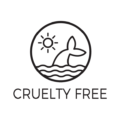- Getting Started
-
by k.mammasis
Both vitamin D3 and provitamin D3 are found in microalgae, which shows that vitamin D3 is present in the plant kingdom. Many people will be surprised to learn that vitamin D3 is also found in a number of plant species. Specifically, some types of algae, such as certain species of red (e.g. Corallina and Lithothamnion) and brown algae, have the ability to synthesize vitamin D3 when exposed to ultraviolet (UV) light. The name “vitamin D” also refers to vitamin D2, which is created in fungi and yeasts after provitamin D2 is exposed to UVB rays.

How is vitamin D3 generated in algae?
The vitamin D3 produced by algae is in the form of ergocalciferol, which is converted into the active form of vitamin D3 by humans and animals. However, it is important to note that not all algae produce vitamin D3, and the amount and availability of vitamin D3 in algae can vary depending on the species, growing conditions, and processing methods.
In recent years, there has been growing interest in using algae as a vegan-friendly source of vitamin D3, particularly for those who follow plant-based diets or have limited sun exposure.
Why algae vitamin D3?
Cholecalciferol is a vegan-friendly alternative to vitamin D3 sourced from animal products, such as lanolin from sheep’s wool. It is particularly useful for individuals who follow a vegetarian or vegan diet, as they may not consume or prefer not to consume animal-derived products. A comprehensive review of Vitamin D in plants may be found in here.
Additionally, vitamin D3 is an important nutrient for overall health and well-being, as it plays a critical role in calcium absorption and bone health, as well as supporting immune function, cardiovascular health, and brain health. Adequate vitamin D3 levels have also been associated with a reduced risk of chronic diseases, such as cancer, diabetes, and autoimmune disorders. Obtaining the required amount from functional foods is key to great absorption and a long term sustainability plan.














